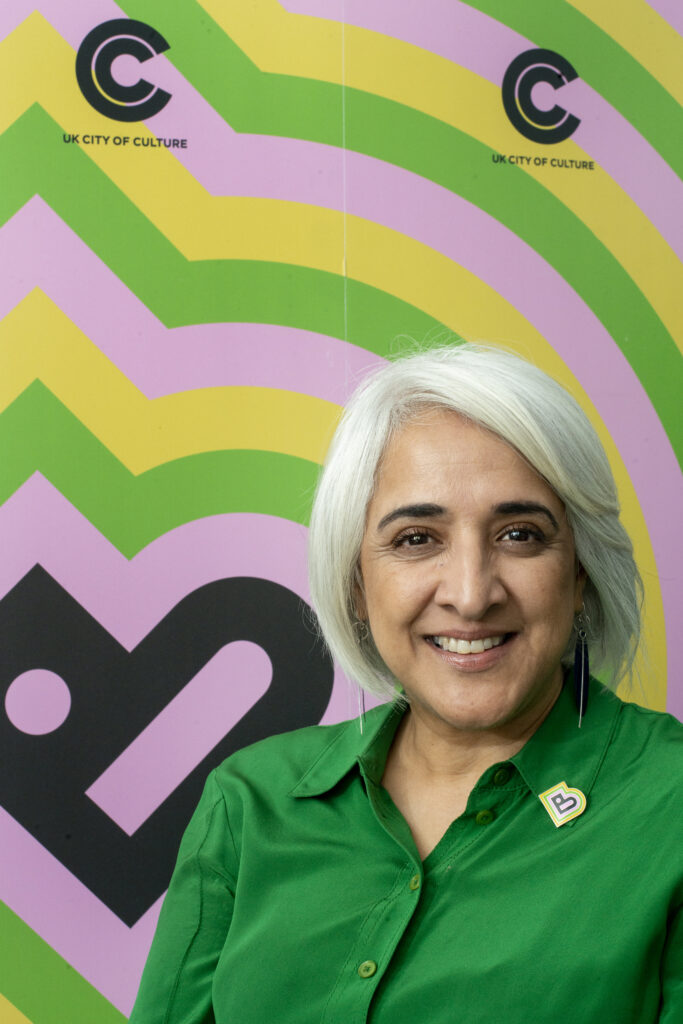Enjoy this article?
Most Museums Journal content is only available to members. Join the MA to get full access to the latest thinking and trends from across the sector, case studies and best practice advice.
As City of Culture for 2025, Bradford has kicked off a year-long programme that celebrates its rich industrial heritage and vibrant contemporary culture. However, this year of festivities is just the beginning; the true impact of being a City of Culture can unfold only in the years that follow.
As summed up by Rosie Millard, former chair of Hull 2017, when speaking to the BBC last year: “It’s not like you have a magic wand and you can completely change a city; it helps it on its way to becoming something different in time.”
Museums and galleries have played pivotal roles in that journey for all three previous host cities – Derry/Londonderry, Hull and Coventry – each using their time as City of Culture as a catalyst for cultural regeneration.
From bringing in capital investment to reinvigorating interest in culture among a range of stakeholders and increasing partnership working, there are many benefits. However, success and legacy has meant different things for each host.

“Legacy is a key part of our work, and our teams are making sure that we have a lasting legacy in Bradford,” says Shanaz Gulzar, Creative Director of Bradford 2025. “Through our skills and training programme, we [are] empowering local talent and nurturing a vibrant, sustainable cultural sector that will have a lasting impact on the region.”
According to Understanding the Economic Impact of UK Cities and Capitals of Culture – a report produced by Emma McDowell and Ava Podgorski from the Centre for Cultural Value research body that reviewed the evaluation from each UK City of Culture, plus the time Glasgow and Liverpool spent as European Capitals of Culture – there are shared benefits for the host cities.
Alongside a short-term boost to the visitor economy and the related “gross added value” to the broader economy, the report noted that the UK City of Culture improved perceptions of the host city’s identity during the year and immediately after.
It was also found that the initiative supports valuable opportunities for “impactful cross-sector collaborations”, attracting significant private and public investment opportunities.
However, cautionary notes were also sounded, particularly regarding the longer-term impact. All evaluations underlined the critical importance of strategy planning to ensure networks are sustained and thrive after the year, which becomes more difficult after the delivery teams are disbanded. It also raises questions about the legacies of the programmes for local communities and those working in the arts and culture sectors.
It is a challenge that all host cities are keenly aware of and take steps to mitigate, not just in the years that follow but, as outlined by Bradford’s Gulzar, from the first day of planning.
For Derry/Londonderry, the first city to win the title, its 2013 programme intended to help reframe the city’s narrative from one entrenched in the Troubles and division to one around unity and community cohesion. It was clear from the outset that this goal couldn’t be delivered in a year.
Oonagh McGillion, director of legacy at Derry City Council, says: “The bid was never about the delivery of a one-year cultural and events programme; it was a strategic intervention to develop our tourism product and create a step change in how the city is perceived. It was about building confidence within communities, bringing about investment, and growing our tourism base and cultural and historic offerings.”
That investment is still being realised, with the North Atlantic Museum due to open in 2026 as an anchor for a new cultural hub. The city’s cultural offer continues to grow, as illustrated by the Void Gallery’s production of
Eva Rothschild’s The Shrinking Universe representing the Irish Pavilion at the Venice Biennale in 2019, and the Centre for Contemporary Art being shortlisted for Art Fund Museum of the Year in 2021.
“It is difficult to measure but easy to feel,” says McGillion. “The upsurge of confidence among our creative sector was one of the most important legacies of 2013. The creative and cultural sector is now recognised as a critical driver for positive change.”
In Hull, the second City of Culture in 2017, a big part of the legacy lies in the partnerships the year helped to develop. Simon Green, managing director of Hull Culture & Leisure, says: “From a political point of view, it reinforced the commitment to culture, and it helped us embed our relationships with bigger partners. Being a City of Culture brings new partners to you.”
With a strategy to challenge preconceptions of the city as isolated and disadvantaged, the City of Culture year celebrated Hull’s maritime heritage and identity.
The Maritime Museum was a focal point, staging a series of events and exhibitions, including the hugely popular comedian Bill Bailey’s Cabinet of Curiosities, which drew attention to its history but also highlighted Hull’s determination to control its own narrative.
The success of 2017 enabled Hull to apply for £15m of National Lottery funding for a major refurbishment of the Maritime Museum, including new spaces for exhibitions and community engagement.
“City of Culture made us think about our audiences further afield, our 40- to 50-mile catchment,” says Green. “We had to consider what that meant for people who got the train to come to us. It ramped up the diversity – and that has pushed and stretched us as a team.”
As well as the success seen at the Maritime Museum and Ferens Art Gallery, which hosted the Turner Prize, it breathed life into Hull’s city centre as it responded to the rise in visitor numbers.

“Culture drives social and economic regeneration,” says Green. “If you do culture well, it’s good for people. It’s fun and pleasurable, its educational and it improves lives in many ways.”
Coventry, which was City of Culture in 2021, suffered more setbacks than previous hosts, with its programme delayed due to Covid restrictions and its City of Culture Trust later going into administration. But it is still focused on building its legacy.
For Marguerite Nugent, cultural and creative director at CV Life, which operates the city’s leisure services, the impact is evident every day through increased partnership working and the growth of its community engagement programme.
It can also be seen at the city’s Herbert Gallery and Museum, which received a £1.2m refurbishment in preparation for 2021, plus funding to upgrade its building management system afterwards.
However, Nugent, who took over her role in July 2022, says coming in as the City of Culture programme ended means she views the legacy differently.
“When I arrived, I was struck by how well networked Coventry is,” she says. “It has a real ecosystem in place. There are always people interested in coming to speak to us, and we are ready for opportunities when they come along because we are in a strong position.”
Cultural regeneration lies at the heart of the City of Culture programme, but as the first three host cities have demonstrated, it is more than a short-term initiative. It lays the groundwork for long-term cultural investments, with museums and galleries playing a pivotal role as bridges between past, present and future.
However, there must be sustained commitment across sectors and between stakeholders, both in the arts and culture and beyond, as well as community engagement to build a sustainable and lasting legacy.
Most Museums Journal content is only available to members. Join the MA to get full access to the latest thinking and trends from across the sector, case studies and best practice advice.